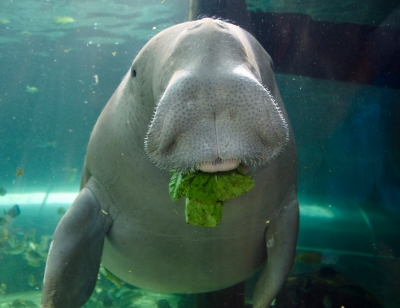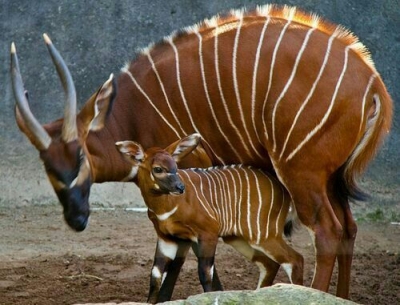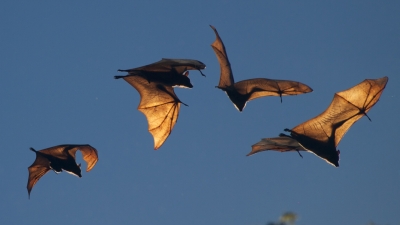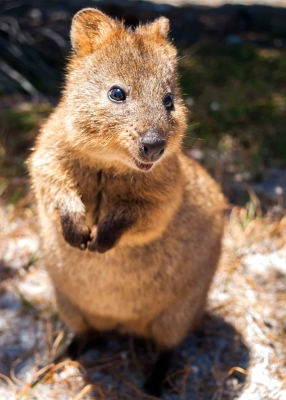WHAT ARE THE FUN FACTS ABOUT DUGONG?

A Dugong (family: Dugongidae) is the only herbivorous marine mammal found in deep waters. Dugong is a mammal that is closely related to elephants. It is a huge bulbous animal who is usually grey brown in color. Like whales, they have flattened fluked tail, a distinctive head shape, paddle like flippers but do not have any dorsal fin. The dugong is a marine mammal that is the only herbivore found in the deep waters that eats seagrass. Dugongs, even though they resemble a manatee, do not belong to the family of manatees. They weigh less than manatees and have different physical characteristics. Their rarity and the decreasing population are a great threat to their extinction. Issues like degradation of sea beds and illegal fishing traps are a major threat to the Dugong population.
There are very few dugongs that live in shallow waters of Australia, the Indian, and Pacific Ocean. Dugongs are listed as creatures that are vulnerable to extinction by the IUCN Red List. The numbers of these beautiful sea creatures are decreasing day by day due to the loss of seagrass beds and pollution of water which disrupts their habitation. Illegal fishing and fishing of dugongs for consumption and trade also is causing their population to decrease. They cannot live in freshwater and can tolerate marine water. Dugongs communicate by emitting sounds which are similar to chirps, whistles, barks that travel through water. They also communicate through sounds that echo underwater. They are also found in oceans around United States.
A dugong is a marine mammal that is native to the Great Barrier reef, world’s largest coral reef in the continent of Australia. The coastal shallow water around Australia were home to more than 85,000 animals but dugong populations are constantly decreasing across the world and they are highly endangered. The dugong species is hunted to extinction as well as traded to different countries illegally. Dugongs mostly live a sedentary lifestyle and migrate for miles in search of seagrass. Some dugongs prefer living in pairs, while sometimes, a herd of 7-10 Dugongs can be seen habituated. The herd or a group of dugong is called a nutcluster.
Dugongs have a lifespan of 70 years and give birth to only one calf during reproduction. They spend most of their time nursing and tending to their offspring. Low litter count and elongated weaning periods are also the reason why the gugong population is depleting. Young dugong calves are easy prey for crocodiles and sharks, which again contributes to population decrease.
Credit : Kidadl
Picture Credit : Google





